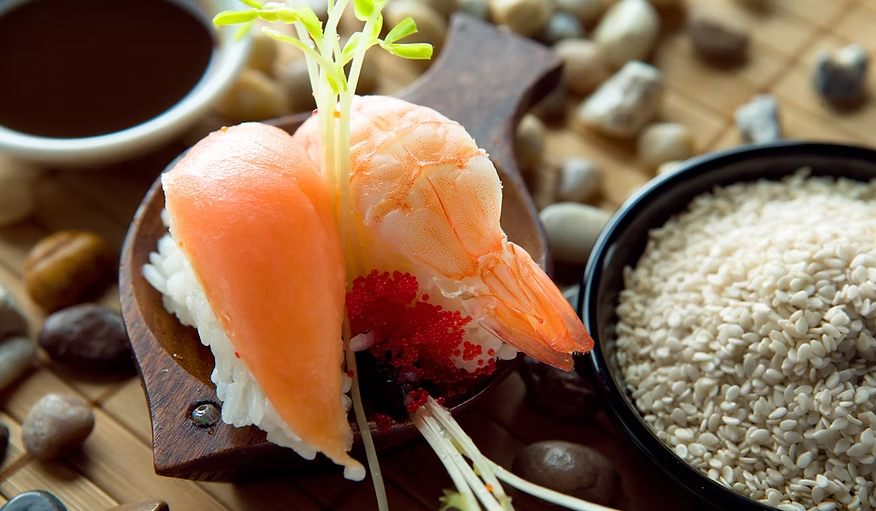Japanese delights

FOOD + DRINK
We have highly entertaining welcome and farewell dinners where Japanese delights will be on your menus.
Sushi is probably the most recognisable Japanese food and has exploded in popularity around the world. While the dish is synonymous with raw fish now, there is much more to the story. Sushi is the combination of the words “su” and “meshi”. In English this means vinegar and rice. Sushi refers to the slightly sweet, vinegared rice, sometimes called shari, paired with a garnish—or neta—of seafood, egg or vegetables either raw or cooked.
Read More
The history of sushi starts in the rice paddies of the Mekong Delta. Farmers would ferment fish with salt and rice and then discard the rice. This practice of making what is now called narezushi is said to have arrived in Japan at the same time as the introduction of rice cultivation. Until around the Muromachi period, the rice was discarded after fermentation, then people came up with the idea of eating the precious rice together with the fish.
Three hundred years later, Edo, now Tokyo, had become a booming city with over a million inhabitants. Entrepreneurial chefs of this time developed hayazushi, literally, fast sushi. They would place various garnishes such as egg or raw fish onto vinegared rice balls that could be eaten together. This style of sushi took Japan by storm and spread across the entire country. As it spread across the country, chefs would integrate the best of local produce and seafood to create entirely new varieties of sushi. The rapid expansion of the dish combined with the regional dining styles of Japan gave rise to the ever-expanding variety of dishes the world now knows as sushi.
Chopsticks are the preferred utensil for eating sushi most of the time, but hands are perfectly acceptable as well, especially at higher-end restaurants.
Read More
If ginger is provided, eat it between orders as a palate cleanser; it is not a topping. If you’re eating kaitenzushi, you may take plates freely off the conveyor belt but never put a plate back. If seated at the counter of a conveyor belt restaurant with a chef in front of you, you can order directly from them as opposed to selecting something from the belt. Green tea is usually self-service at kaitenzushi.
Sake is an excellent pairing with your sushi. Speak with your server to ask for assistance in choosing a sake for your meal. In the hot summer months a chilled, less dry sake is best. In the colder winter months, a heated, dry sake will go down a treat. White wines, sparkling wines and champagnes are also an excellent choice. Most sushi restaurants will often have a variety of drinks to choose from. However, kaitenzushi restaurants typically only stock green tea (which is often self-service at your table or counter), domestic draft beers and inexpensive sake

Here is a typical Japanese izakaya menu.
Edamame – salted beans eaten as a snack with beer
Karaage – Japanese-style fried chicken
Kushiyaki – chicken (yakitori), meat, fish roasted on skewers
Korokke – potato croquettes filled with ham, crab or cheese
Grilled fish – often seasonal and extra delicious for it
Agedashi-tofu – fried tofu in a light dipping sauce
Ebi-mayo – fried shrimp with mayonnaise
Gyoza – steamed or fried dumplings, often with pork
Agemono – deep-fried squid, fish, prawns
Sashimi – raw fish (sushi without the rice)
Makizushi – rolled sushi
Tamagoyaki – a simple rolled omelette
Salads – often topped with ham or fish (vegetarians beware)

